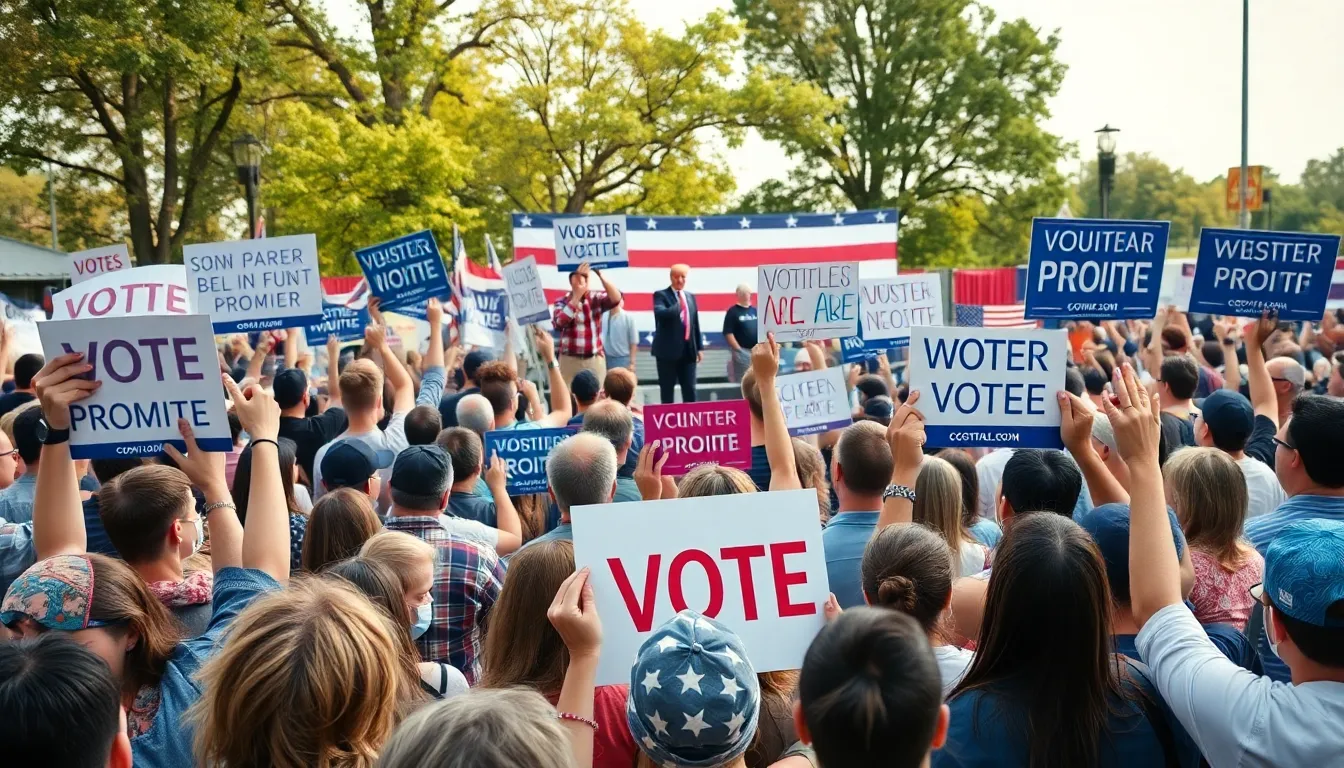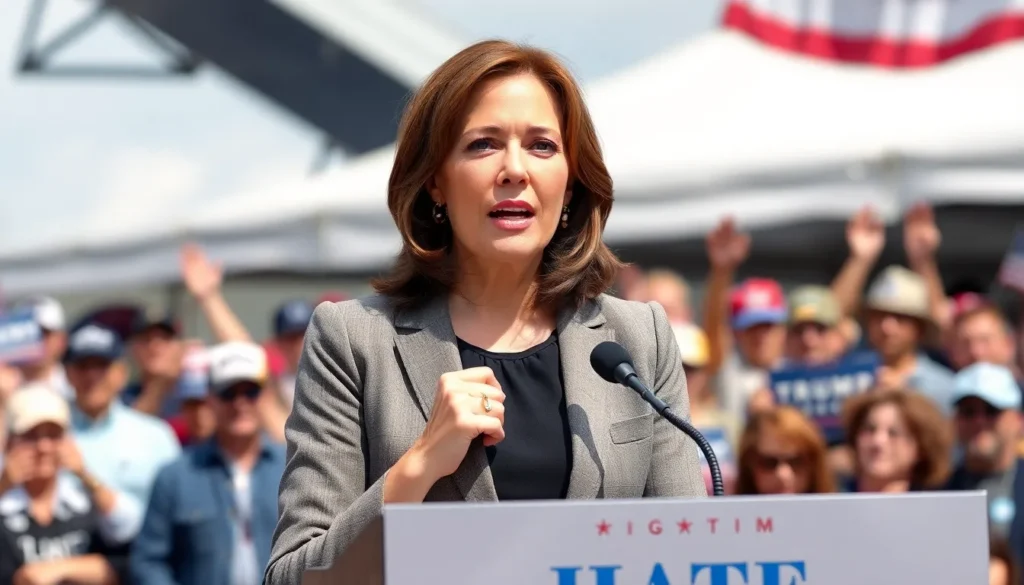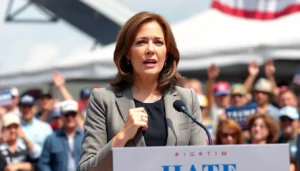Election promises are the cornerstone of political campaigns, shaping voter expectations and influencing decisions at the ballot box. Candidates often make bold commitments, from economic reforms to social justice initiatives, aiming to resonate with the electorate’s hopes and concerns. These promises can ignite passion and drive voter turnout, but they also raise questions about accountability and the feasibility of such pledges.
As election season heats up, understanding the dynamics of these promises becomes crucial. Voters need to navigate the landscape of rhetoric versus reality, discerning which commitments are genuinely actionable and which are mere political posturing. This article delves into the significance of election promises, examining their impact on both candidates and constituents while highlighting the importance of holding leaders accountable once they take office.
Table of Contents
ToggleUnderstanding Election Promises
Election promises play a pivotal role in shaping political campaigns. Candidates use these commitments to connect with voters, which can drive engagement and influence election outcomes.
Definition and Importance
Election promises refer to commitments made by candidates to implement specific policies or actions if elected. They often address key issues that resonate with the electorate, such as healthcare, education, or economic growth. Election promises are important because they help define a candidate’s platform, set voter expectations, and assist citizens in making informed decisions. Voters can gauge candidates’ priorities and values through these pledges.
Historical Context
Historically, election promises have evolved alongside democratic processes. In the early 20th century, candidates frequently used their speeches and pamphlets to outline their commitments. The rise of mass media amplified this trend, allowing promises to reach a wider audience. Significant examples, such as Franklin D. Roosevelt’s New Deal and Lyndon B. Johnson’s Great Society, demonstrated how impactful promises could be when implemented. Over time, public scrutiny of these commitments has increased, leading to greater demands for accountability from elected officials regarding their fulfillment of election promises.
Types of Election Promises

Election promises can be categorized into two main types: campaign promises and governance promises. Each type plays a distinct role in shaping the expectations of voters and the behavior of elected officials.
Campaign Promises
Campaign promises represent commitments made by candidates during their electoral campaigns. These promises often aim to address specific issues that resonate with voters. Candidates may pledge to implement policies regarding healthcare, education, taxation, or infrastructure improvements. Campaign promises serve to engage the electorate, create excitement, and differentiate candidates from their opponents. Their effectiveness can influence voter turnout and candidate support. When these promises align with the priorities of the constituents, they significantly enhance a candidate’s chances of success at the polls.
Governance Promises
Governance promises refer to pledges made by elected officials regarding how they will conduct their duties once in office. These commitments typically entail specific actions or policies to be enacted during a candidate’s term. Governance promises often detail plans for legislative agendas, budgetary allocations, and long-term objectives. Unlike campaign promises, governance promises require collaboration with other governmental branches and adherence to legal frameworks, making them more complex to fulfill. Accountability becomes crucial as voters expect officials to follow through on these pledges, and failure to do so may result in diminished public trust and electoral consequences in future elections.
The Impact of Election Promises
Election promises significantly shape voter expectations and influence policy implementation. These commitments establish a candidate’s credibility and outline their proposed actions once in office.
Voter Expectations
Election promises set clear expectations for voters, creating specific benchmarks for success. Candidates often tailor their pledges to resonate with the electorate’s concerns. For instance, issues such as climate change and economic reform often dominate campaign platforms. Voters, motivated by these commitments, scrutinize candidates’ ability to deliver once elected. Unrealistic promises, or failure to uphold pledges, can lead to voter disillusionment and decreased turnout in subsequent elections.
Policy Implementation
Policy implementation hinges on the feasibility of the election promises made. Successful execution depends on collaboration with legislative bodies and adherence to established regulations. For example, promises related to healthcare reform require negotiation with Congress to navigate complex legislative processes. Additionally, external factors, such as economic conditions and public opinion, can affect the realization of these commitments. Elected officials face the challenge of fulfilling promises while managing competing priorities and addressing unforeseen events, which underscores the need for clear and attainable goals in their platforms.
Common Challenges in Fulfilling Election Promises
Election promises face several challenges that can hinder their fulfillment, impacting public trust and governance outcomes.
Political Constraints
Political constraints significantly affect the ability to fulfill election promises. Elected officials must navigate a complex landscape involving multiple stakeholders, including legislative bodies, opposition parties, and interest groups. Cooperation among these entities is often essential for implementing policies. Conflict between party agendas or lack of bipartisan support can lead to gridlock, preventing proposed initiatives from being enacted. Limited political capital also influences decision-making; officials may prioritize certain promises over others based on immediate political pressures or public opinion shifts. Additionally, changes in the political environment, such as unanticipated election outcomes or shifts in policy focus, can obstruct commitments made during campaigns.
Economic Factors
Economic factors play a crucial role in shaping the feasibility of fulfilling election promises. Budgetary constraints often limit the resources available for new programs and initiatives. Economic downturns can lead to reduced revenue and necessitate spending cuts, making previously promised investments impractical. Political leaders often confront competing fiscal priorities, which can force difficult trade-offs between fulfilling election commitments and addressing urgent economic issues. For example, promises related to infrastructure development may require substantial funding redirected from other critical areas, such as education or healthcare. Moreover, external economic conditions, such as inflation and unemployment rates, further complicate the fulfillment of these commitments.
Election promises play a pivotal role in shaping political landscapes and influencing voter behavior. They serve as a critical link between candidates and the electorate, establishing expectations that can drive civic engagement. However the complexity of fulfilling these commitments often leads to challenges that can erode public trust.
Voters must remain vigilant in assessing the feasibility of candidates’ pledges and hold elected officials accountable for their actions in office. As political dynamics evolve and societal needs shift the importance of genuine commitments cannot be overstated. Ultimately the effectiveness of election promises hinges on transparency accountability and the willingness of leaders to navigate the intricate realities of governance.





